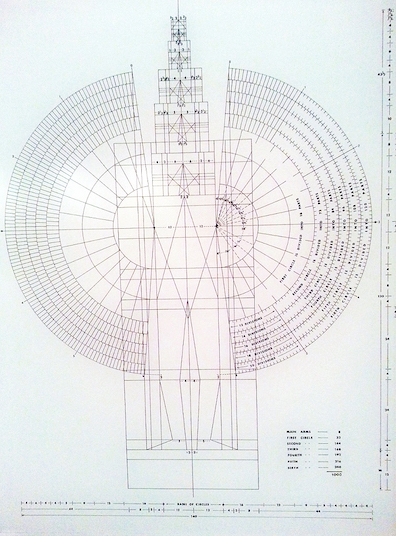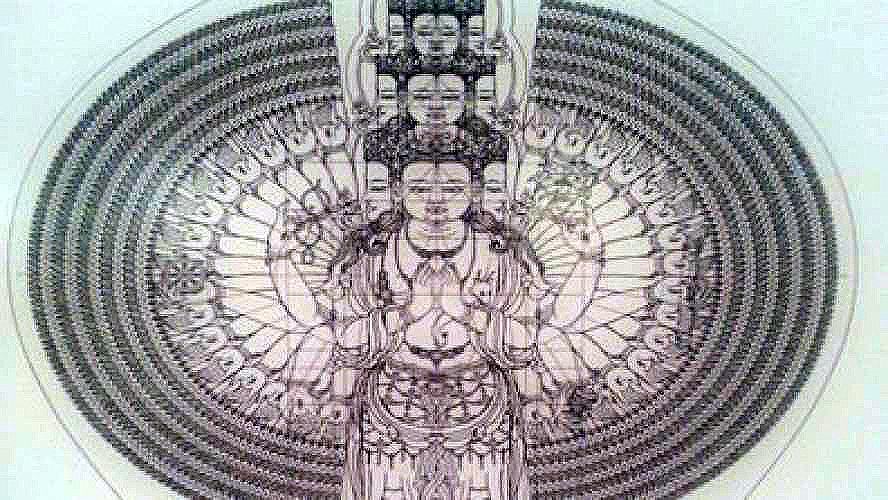
The Rubin Museum continues to explore new and surprising lenses through which to look at the art in our collection. Most recently, the School Programs staff invited educators and administrators from the National Museum of Mathematics (MoMath) to brainstorm ways that math andHimalayan art intersect.
The Rubin has a history of incorporating mathematics into their K-12 programming, especially when it comes to in-school residencies. The Education Department has led “Thinking Through Art” programs based on such mathematical concepts as the Golden Ratio, symmetry in mandalas, and using prayer beads, or malas, to illustrate division problems.
During the MoMath visit, staffers investigated symmetrical patterns, proportions, and grids in mandalas and paintings of deities. They also had the opportunity to discover their own mathematical connections in the galleries. One of the MoMath staff favorites was the Eleven-Headed, One Thousand Armed Avalokiteshvara because of the line drawing that accompanied the painting in our Gateway to Himalayan Art exhibition. Glen Whitney, MoMath’s Co-executive Director, noted that the drawing wasn’t laid out according to a Cartesian grid (all points are plotted out according to X and Y axes), like others we had seen. Instead, it was designed using a polar coordinate system (all points are plotted out relative to a central point).

Later in the day came the Rubin staff’s turn to tour MoMath, which has a gallery devoted specifically to art and how it relates to math. Some of the artworks in this gallery emphasized symmetry, knot theory, and scientific topics such as how the lens of the eye views the world. Tim Nissen, the Chief of Design at MoMath, was quick to point the similarities between the art in their galleries and the mandalas in ours.
Both museum teams learned a great deal from this experience and hope to continue working together in the future. We are currently discussing potential educational partnership opportunities for K-12 and teen audiences.

